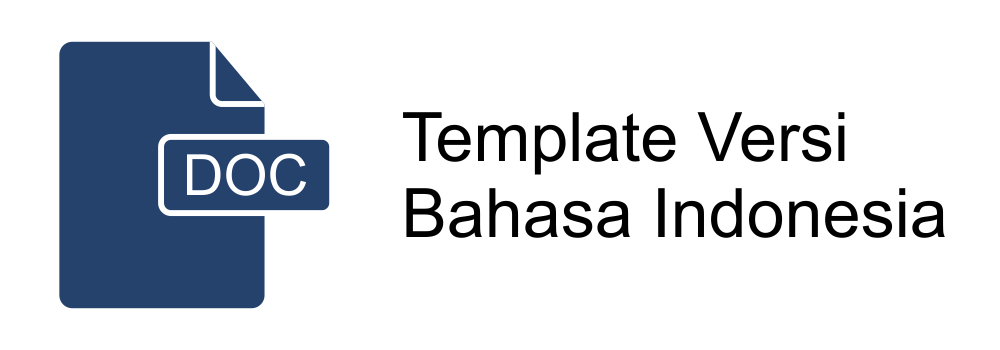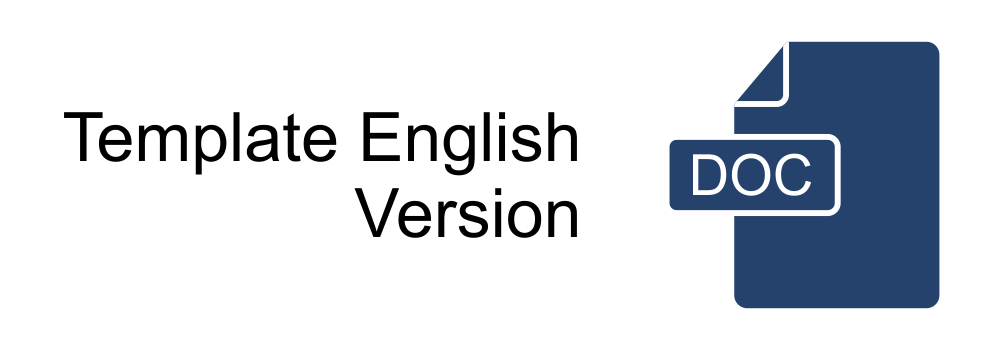English Depiction of Given-New Information in Business-Scape in Padang: a Linguistic Landscape Exploration
Abstract
This study aims at revealing English representation on the business signboards in some business centers in Padang. This research is a qualitative descriptive study that helps researchers to have a thorough analysis of the data. Linguistic landscape and visual semiotics theories proposed by Landry and Bourhis, Kress and van Leeuwen, and Scollon and Scollon are applied to discuss the results. The visual semiotics theory is specified for only composition, especially given and new composition. The study finds that there are 687 data with 957 compositions of given-new, ideal-real, and center-margin information. Among them are 54 (6%) given compositions and 221 (23%) new compositions. It indicates that the business owners in Padang mostly use English as a subordinate language on the signboard. The business owners use English on the signboards to give new information to promote their stores. Hopefully, this research can give more contributions to the linguistic landscape in Padang. It also can broaden the readers’ horizons about the language in public spaces, especially the language used in business areas.
Abstrak
Penelitian ini bertujuan mengungkap penggambaran bahasa Inggris pada papan nama bisnis di beberapa pusat bisnis di Padang. Penelitian ini merupakan penelitian deskriptif kualitatif yang membantu peneliti untuk melakukan analisis data secara mendalam. Teori lanskap linguistik dan semiotika visual oleh Landry dan Bourhis, Kress dan van Leeuwen, dan Scollon dan Scollon diterapkan untuk membahas hasil penelitian. Teori semiotika visual dikhususkan hanya untuk komposisi, terutama komposisi ‘given’ dan komposisi ‘new’. Penelitian ini menemukan bahwa ada 687 data dengan 957 komposisi informasi yang given-new, ideal-real, dan center-margin. Diantaranya, terdapat 54 (6%) komposisi given dan 221 (23%) komposisi new. Hal ini menunjukkan bahwa pemilik bisnis di Padang sebagian besar menggunakan bahasa Inggris sebagai bahasa pelengkap pada papan nama. Pemilik usaha menggunakan bahasa Inggris pada papan nama untuk memberikan informasi baru untuk mempromosikan toko mereka. Diharapkan penelitian ini dapat menambah kontribusi penelitian lanskap linguistik di kota Padang. Selain itu, penelitian ini dapat memperluas wawasan pembaca mengenai bahasa di ruang publik, khususnya di bidang bisnis.
Keywords
Full Text:
PDFReferences
Backhaus, P. (2006). Linguistic Landscapes: A Comparative Study of Urban Multilingualism in Tokyo. In Linguistic Landscapes: A Comparative Study of Urban Multilingualism in Tokyo. Toronto: Multilingual Matters Ltd. https://doi.org/10.21832/9781853599484
Brown, K. D. (2012). The Linguistic Landscape of Educational Spaces: Language Revitalization and Schools in Southeastern Estonia. In D. Gorter, H. F. Marten, & L. Mensel (Eds.), Minority Language in the Linguistic Landscape (1st ed., pp. 281–298). Palgrave Macmillan London. https://doi.org/10.1057/9780230360235
Bruyel-Olmedo, A., & Juan-Garau, M. (2009). English as a Lingua Franca in the Linguistic Landscape of the Multilingual Resort of S’Arenal in Mallorca. International Journal of Multilingualism, 6(4), 386–411. https://doi.org/10.1080/14790710903125010
Erinaldi. (2016, November 3). 4 Rahasia Sukses Bisnis Orang Minang. Liputan 6.Com. https://www.liputan6.com/regional/read/2641967/4-rahasia-sukses-bisnis-orang-minang
Foster, M., & Welsh, A. (2021). English Usage in the Linguistic Landscape of Balikpapan’s Main Throughfares. Indonesia and the Malay World, 49(145), 448–469. https://doi.org/10.1080/13639811.2021.1959162
Gorter, D. (2006). Linguistic landscape: A new approach to multilingualism. In Linguistic Landscape: A New Approach to Multilingualism. Clevedon: Multilingual Matters Ltd. https://doi.org/10.21832/9781853599170
Gorter, D. (2013). Linguistic landscapes in a multilingual world. Annual Review of Applied Linguistics, 33, 190–212. https://doi.org/10.1017/S0267190513000020
Hult, F. M. (2014). Drive-thru Linguistic Landscaping: Constructing a Linguistically Dominant Place in a Bilingual Space. International Journal of Bilingualism, 18(5), 507–523. https://doi.org/10.1177/1367006913484206
Johnston, R. B., & Christensen, L. (2014). Educational Research: Quantitative, Qualitative, and Mixed Approaches. California: Sage Publications, Inc.
Kress, G., & Leeuwen, T. van. (2006). Reading Images: The Grammar of Visual Design (Second Ed.). Taylor & Francis e-Library. https://doi.org/10.4324/9780203619728
Landry, R., & Bourhis, R. Y. (1997). Linguistic Landscape and Ethnolinguistic Vitality: An Empirical Study. Journal of Language and Social Psychology, 16(23), 23–49. https://doi.org/10.1177/0261927X970161002
Mahsun. (2005). Metode Penelitian Bahasa: Tahapan Strategi, Metode, dan Tekniknya. Jakarta: Raja Grafindo Persada.
McGovern, K. (2019). Why Did English Become the “Global Language”? Medium: English Language & Literature. https://medium.com/english-language-faq/why-did-english-become-the-global-language-9bbc14b532cd
Merriam, S. B. (2009). Qualitative Research. New York: Jossey-Bass.
Merriam Webster. (n.d.). Merriam Webster.
https://www.merriam-webster.com/
Nash, J. (2016). Is Linguistic Landscape Necessary? Landscape Research Group Ltd, 41(3), 380–384. https://doi.org/10.1080/01426397.2016.1152356
Nikolaou, A. (2016). Mapping the Linguistic Landscape of Athens: the Case of Shop Signs. International Journal of Multilingualism, 14(2), 160–182.
Oktavianus. (2022). Multimode and Multirole of Languages in Public Spaces. Jurnal Arbitrer, 9(1), 71–79.
Pereira, I. (2022, February). What Color is Your Scent? Fragrantica. https://www.fragrantica.com/news/What-Color-is-Your-Scent-16154.html
Protassova, M. M. (2021). Linguistic Reactions to COVID-19: The Case of Tourism in Helsinki in Summer 2020. University of Helsinki.
Rohmah, Z. (2005). English as a Global Language: Its Historical Past and Its Future. Bahasa dan Seni, 1, 106–117.
Rowland, L. (2015). English in the Japanese Linguistic Landscape: a Motive Analysis. Journal of Multilingual and Multicultural Development, 37(1), 40–55. https://doi.org/10.1080/01434632.2015.1029932
Sari, K., & Pranoto, B. E. (2021). Representation of Government Concerning the Draft of Criminal Code in The Jakarta Post: A Critical Discourse Analysis. Parole: Journal of Linguistics and Education, 11(2), 98–113.
Scollon, R., & Scollon, S. W. (2003). Discourses in place. Taylor & Francis e-Library.
Silverman, D. (2004). Qualitative Research: Theory, Method and Practice. In Qualitative Research (Vol. 2nd, p. 378). California: Sage Publications, Inc. http://books.google.com/books?hl=de&lr=&id=v6X7SolgXVUC&pgis=1
Starman, A. B. (2013). The Case Study as a Type of Qualitative Research. In Journal of Contemporary Educational Studies (1st ed., pp. 28–43).
Strauss, A., & Corbin, J. (1998). Basics of Qualitative Research: Techniques and Procedures for Developing Grounded Theory. California: Sage Publications, Inc.
Sudaryanto. (1993). Metode dan Aneka Teknik Analisis Bahasa. Yogyakarta: Duta Wacana University Press.
Wamad, S. (2022). Sejarah dan Asal-usul Nama Bandung. Detikjabar. https://www.detik.com/jabar/budaya/d-6302191/sejarah-dan-asal-usul-nama-bandung
Woo, W. S., & Riget, P. N. (2020). Linguistic Landscape in Kuala Lumpur International Airport, Malaysia. Journal of Multilingual and Multicultural Development, 1–19. https://doi.org/10.1080/01434632.2020.1742724
Yendra, & Artawa, K. (2020). Lanskap Linguistik. Jakarta: Deepublish Publisher.
Zahara, I., & Wijana, D. P. (2022). The Function of English Usage on Linguistic Landscape of Padang: A Case Study on Khatib Sulaiman Street. Lingua Didaktika, 16(1), 026–043. https://doi.org/10.24036/ld.v16i1.115206
Zainal, Z. (2007). Case Study as a Research Method. Jurnal Kemanusiaan (9), 1-6.
Zulprianto. (2020). Two Indonesian Translations of Animal Farm: Linguistics, Ideology, and Equivalence. Doctoral thesis. Deakin University.
DOI: https://doi.org/10.26499/surbet.v18i1.6466
Refbacks
- There are currently no refbacks.

This work is licensed under a Creative Commons Attribution-NonCommercial-ShareAlike 4.0 International License.
This work is licensed under a Creative Commons Attribution-NonCommercial-ShareAlike 4.0 International License.











